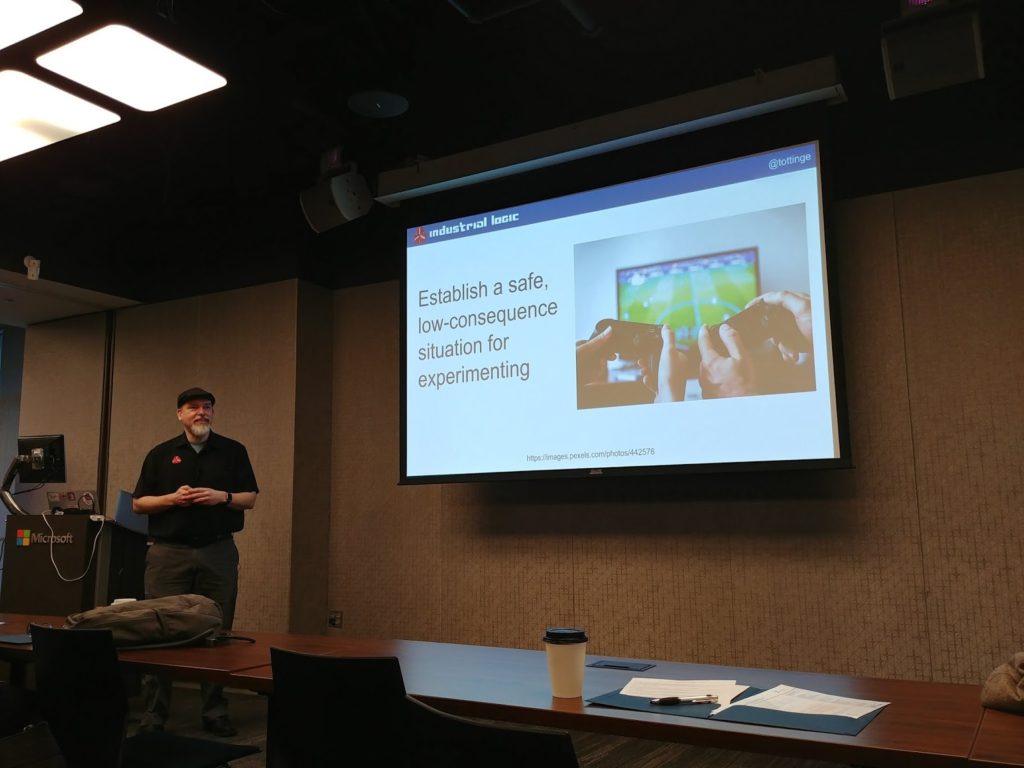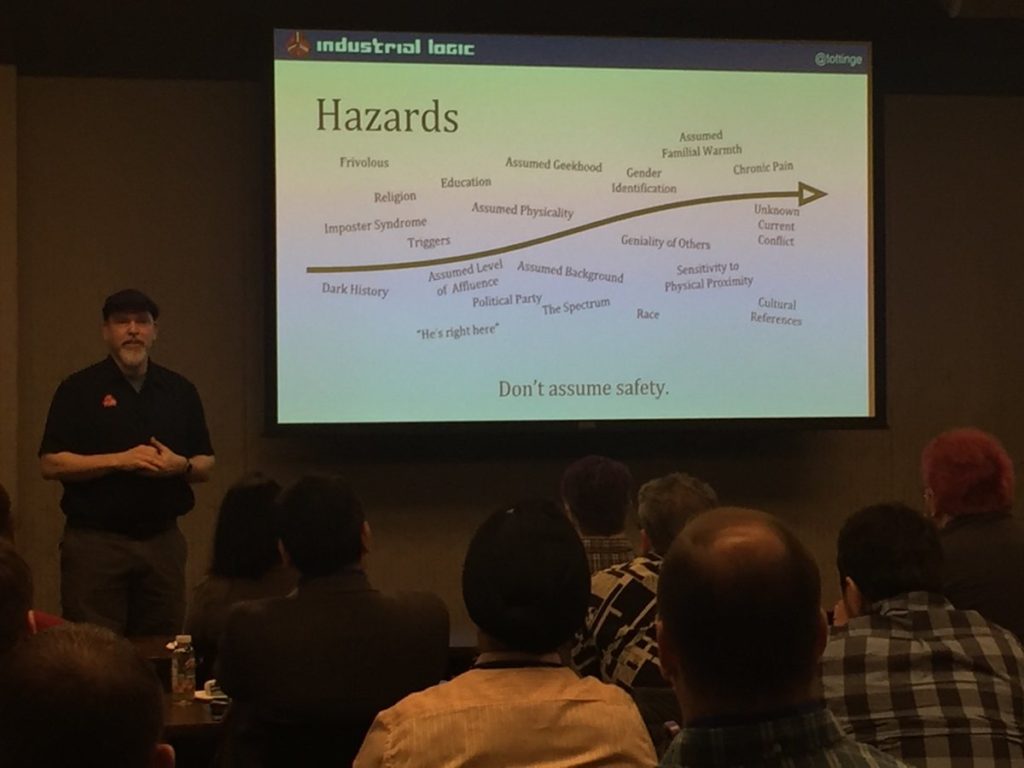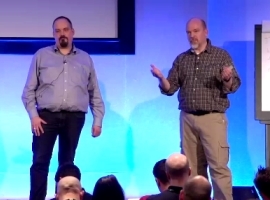I’m going to be using a metaphor that not everyone can relate to since not everyone is on a speaking circuit.
My hope is that this metaphor will teach you two things: how to plan a conference talk, and how to approach doing big things quickly.
When you speak at a conference, whether keynote or whatever, you aren’t asked to make estimates but rather are given a time budget. You have 45 or 50 or 90 minutes. You get that budget and you’re expected to stay inside it.
This is a good thing.
It’s considered very rude and undesirable to run over your time at a conference. You don’t want to be rude and undesirable, so this leaves you with some decisions to make.
Squeezing:
The people of SuperConferencePalooza are willing to invest in your presentation. You are granted 45 minutes of their scheduled time starting at 9 on a Tuesday.
You need to prepare the talk for impact and be sure to finish on time.
You can try to squeeze in everything you know or everything you want to say into that space – maybe you can talk faster and try to hit all the points as you fly past them.
This is almost always a disaster.
Squeezing more into less space seldom works well.

Not only do you exhaust your audience, but you also end up with a presentation more memorable for the struggle than the content.
Everyone remembers that you talked really fast and hard and put in a lot of effort, but nobody remembers what you talked about.
Slicing:
Alternatively, you can slice the information and prioritize it, so you give the most important ideas early on and leave out a lot of other ideas.
You put some stories and ideas at the end of the presentation, so that you run out of time with the best info having been adequately delivered.
You might save one line as the “punch line” at the end of the talk to seal the core point of the talk in the audience’s mind, and structure (refactor) the earlier material to only include ideas supporting the “punch line.”

Your talk is arranged to keep up the entertainment value while delivering value along the way to the crucial closing point.
By slicing the topic and only delivering the best topic-supporting information, you have built a better talk and you also have time management contingencies; you can drop some stories or include other ones to adjust for time on the fly.
It is possible to repeatedly deliver on-time performances this way.
Delivering less, better seems to result in a better talk.
Once your presentation has been cut to the quick and is well within time limits, it’s easy to add some cool features that make it more fun.
Games, audience interactions, cool graphics, jokes. There is room for more goodness once you’ve focused and sliced and limited.
Investment Basis:
Notice it’s not really estimate-based.
Organizers don’t ask how long it will take us to talk about psychological safety and then size the slots appropriately. God knows how long we could rattle on.
It’s investment-based and it’s got some protection built-in.
Conference organizers have a legacy and a reputation to think about.
They manage their risks.

If you did well last year, there is a greater chance you’ll be given a slot (maybe a bigger slot) this year.
If you do well this year, they’ll likely invest more time in you in the future. Maybe they’ll give you room to speak on riskier topics, or maybe in larger rooms with more seats.
There is someone on the review committee who wants you to provide an estimated timeline with milestones to “prove you’ve thought it through” – but I think these are unnecessary and unhelpful.
After all, you aren’t going to deliver the schedule to audience. They’ve come to learn about the subject, not the materials. Your crucial point, your “punch line” needs to pay off with value.
Nobody is standing by with the schedule in their hand, checking off your on-time delivery of milestone points. The schedule is only ever used by the reviewers, but the audience will rate and talk about the performance.
Ultimately, as a reviewer, I am either willing to invest a timeslot or I’m not.
Can the speaker deliver one idea clearly, and is it a topic that aligns with the track and conference so that people want to hear it? If so, I need little else from the speaker.
I prefer to see the speaker’s past history and maybe see a video of their style. I’d like to see prior attendee’s recommendations and critiques if I could.
Projects:
Now, if that works for talks why can’t it work for projects?
Pro Tip: It does.
This is why Agile projects deliver small units of end-to-end functionality frequently.
They get used to prioritizing slices of work rather than big batches and fat epics.
The smaller the increments of the project they produce, the faster they can produce them.

That’s not just coding time, that’s ideation through deployment and monitoring.
Doing less, more often is brilliant project management, because more important work can be front-loaded and sacrificial niceties can be pushed toward the end.
Because everything works end-to-end, you can stop or change direction as needed.
This gives product managers the ability to change their minds more often, based on customer feedback from earlier slices of the product.
Given a short time or a fixed investment, it seems wise to try to slice instead of squeezing.
Squeezing sucks.
Slicing works.
Note: this is taken from a tweet stream composed in August 2019




